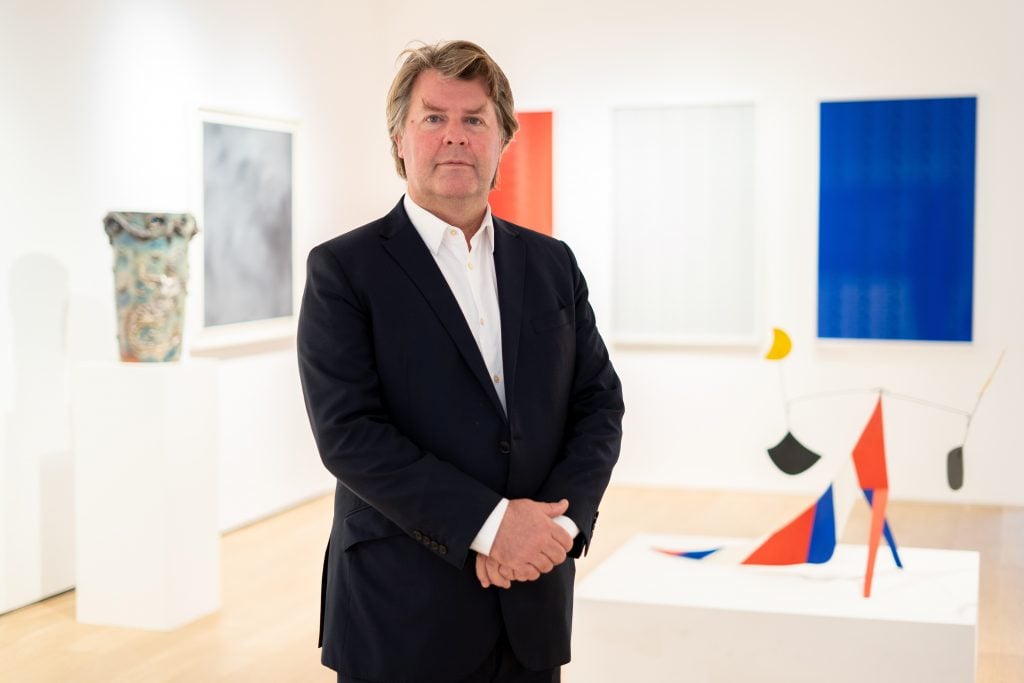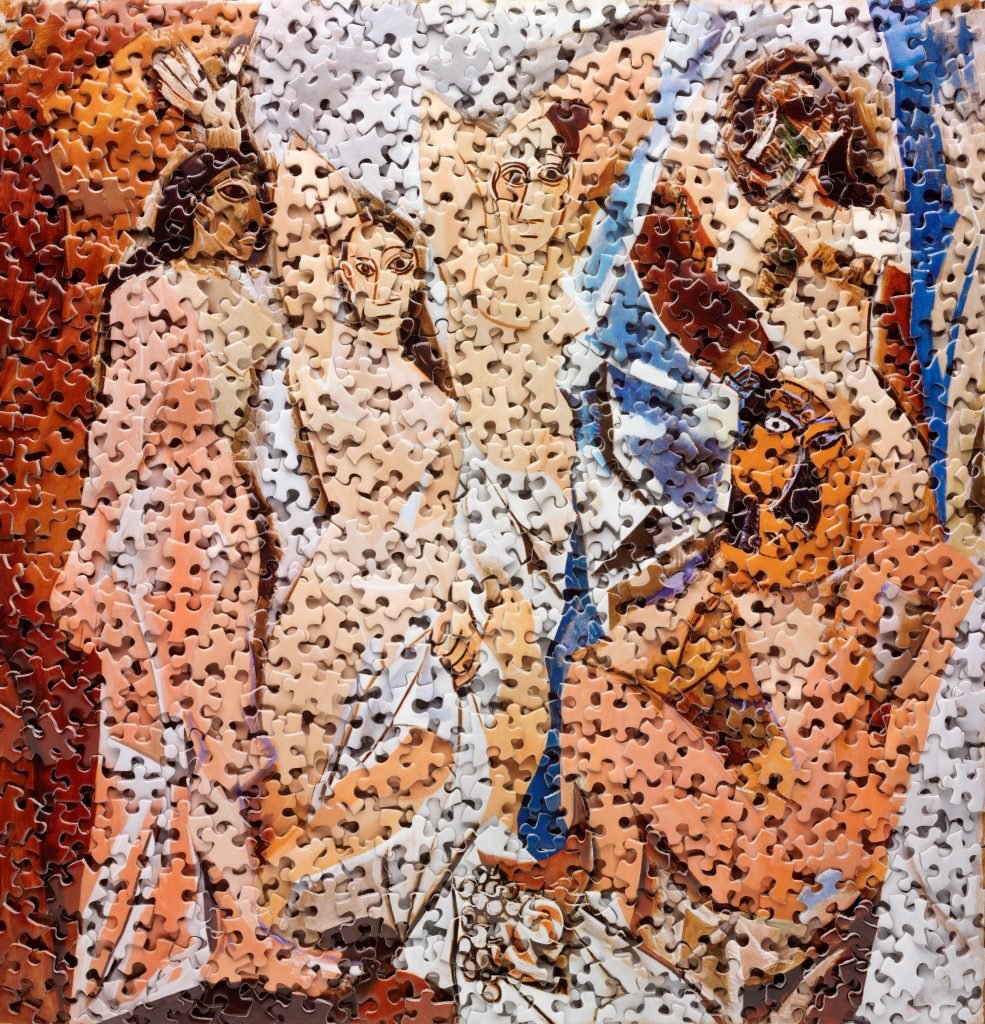Art Collectors
What I Buy and Why: Art Dealer Ben Brown on the Tiny Matisse in His Bathroom and the One Massive Installation He’s Never Displayed
We caught up with the gallerist on what's inside his personal collection.

We caught up with the gallerist on what's inside his personal collection.

by
Naomi Rea

Gallerists are the first to tell you about that great new artist everyone is coveting. But eagle-eyed collectors often know to look beyond the gallery walls, to the back-room goodies being held back for the right client.
But why not go one further? What’s in art dealer’s collection? We spoke with the London- and Hong Kong-based gallerist Ben Brown to find out just that.
Brown was immersed in the art world from a young age as the son of the British painter Rosamund Brown, a fixture of the Hong Kong art scene in 1970s and ’80s, where Brown spent his early years. But rather than following directly in his mother’s footsteps and becoming an artist, he was drawn to the movements of the art industry. Decamping to Europe, he passed through jobs at galleries and a 10-year stint at Sotheby’s before establishing Ben Brown Fine Arts in London in 2004. Later, he was among the first wave of international galleries to open an outpost in Hong Kong in 2009.
Today the gallery roster spans established names such as YBA Gavin Turk and ZERO artist Heinz Mack to rising contemporary art stars Hank Willis Thomas and Awol Erikzu.
We caught up with the dealer about what’s in his personal collection, from the 20th-century Italian master whose work first inspired him to collect to the intimate Matisse that hides out in his bathroom.
What was your first purchase?
I made my first purchase in 1994, which was a Biro work by Alighiero Boetti titled La Notte da luce alla notte (The Night Gives Light to the Night). I have had the good fortune of owning many Boetti works since, and am still an avid collector.
One of the highlights has been having my works included in the 2011-12 retrospective of Boetti’s work, which traveled from the Museo Reina Sofía, Madrid, to Tate Modern, London, and on to MoMA in New York. I have had a number of exhibitions of Boetti’s works in my galleries over the years and my gallery in Hong Kong will present an exhibition of Boetti’s embroideries, rugs, and works on paper later this month. Boetti’s vision was so strong and so all-encompassing that he has hugely influenced many contemporary artists and is rightly considered to be Europe’s equivalent to Andy Warhol.
What was your most recent purchase?
A José Parlá painting direct from the artist, who I represent. Calle Concordia, La Habana (2018) is a large-scale abstract painting which draws on key and recurring themes in Parlá’s practice including the urban space, human markings, and calligraphy that reference his Cuban heritage.
I originally had this painting hanging in the gallery, behind my desk, and after spending time with it I decided I didn’t want to sell it! It’s now hanging in pride of place at home, in my library, where I spend most of my time.
Which works or artists are you hoping to add to your collection this year?
One of Yoan Capote’s new paintings from his forthcoming show in my London gallery. Yoan’s fishhook paintings are perhaps his most iconic, and his upcoming exhibition, “Requiem,” marks a new development in these seascapes as he introduces gold leaf to these works for the first time.
These new paintings are not only incredibly beautiful but powerful; the image of the sea connects us as a universal experience and allows us to explore spiritual and physical boundaries. I’m also hoping to add another Warhol painting and another Fontana work.
What is the most expensive work of art you own?
The way I value art does not necessarily correspond to the art market.
Where do you buy art most frequently?
Most frequently from my artists but sometimes from other galleries, and sometimes at auction. I am always on the lookout for the next piece to add to my collection.
Is there an artwork you regret purchasing?
There are no artworks that I regret purchasing but there are plenty of artworks I regret not purchasing, and that I regret selling.
What work do you have hanging above your sofa? What about in your bathroom?
The sofas are more in the middle of the room, but above my fireplace is a beautiful white, four-cut painting by Lucio Fontana, who I firmly believe is one of the most innovative artists of the 20th century. In my bathroom is a very tiny, beautiful, and expressive 1906 Matisse drawing.

Vik Muniz, Les Demoiselles d’Avignon, after Pablo Picasso (Gordian Puzzles)(2009). Courtesy Ben Brown.
What is the most impractical work of art you own?
A Mariko Mori installation from her series “The Beginning of the End.” Based in Docklands, London, it is comprised of 13 segments of performance-based filming in which the artist photographs her surroundings with a 360-degree revolving camera. Sadly, I have never installed it in the 15 years I have owned it.
What work do you wish you had bought when you had the chance?
There are too many to mention.
If you could steal one work of art without getting caught, what would it be?
Les Demoiselles d’Avignon by Picasso, one of the most radical examples of a break from tradition by a true maestro. In the meantime, I’ll console myself with Vik Muniz’s Les Demoiselles d’Avignon, after Pablo Picasso (Gordian Puzzles) (2009).